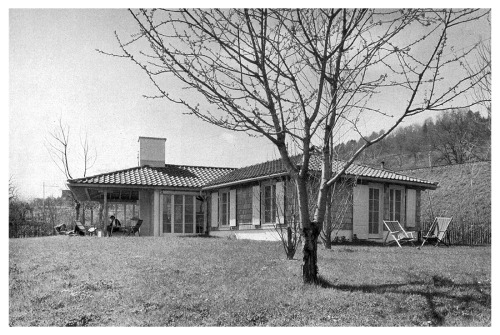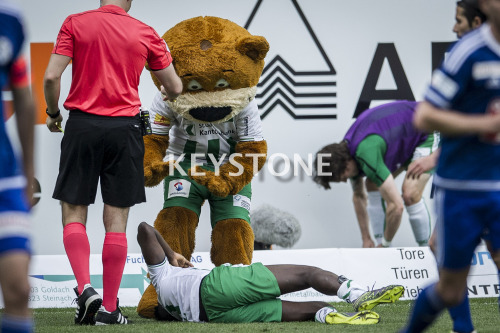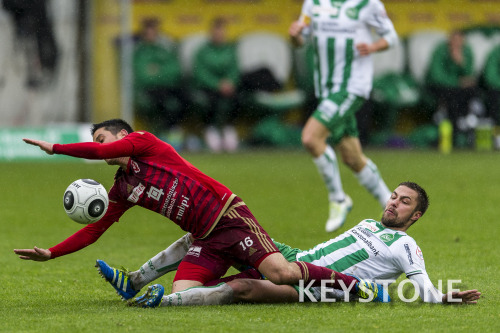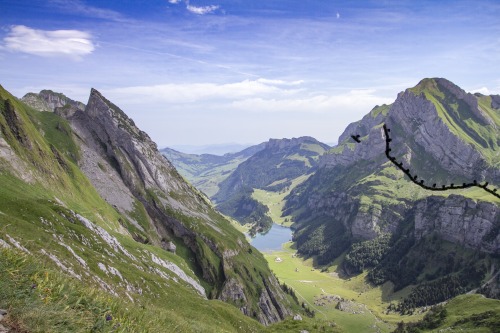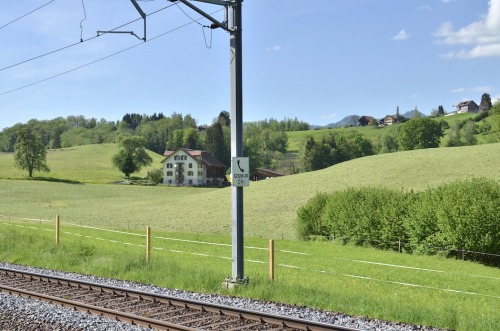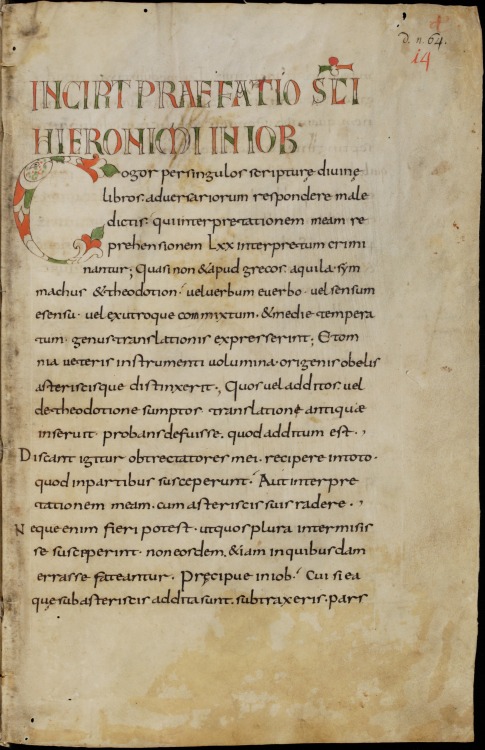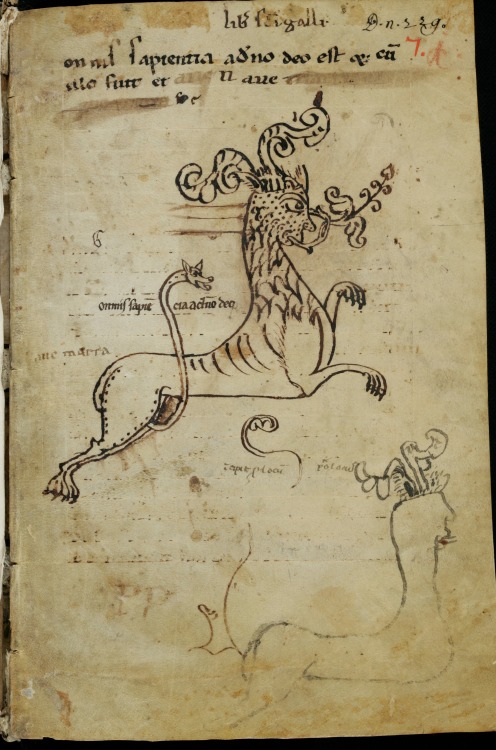#st gallen
Weekend house in Bollingen
Bollingen, St. Gallen, Switzerland; 1949
Max Ernst Haefeli, Richard Zangger & Arnold Scheuchzer, Gustav Ammann (photography by Michael Wolgensinger)
via “Das Werk” 38 (1951)
Post link
2013: Different perspectives of the Rotstein Pass Thrust in the Alpstein, with the lake Seealpsee in view.
Post link
On my continuing trip through the St Gall archives, I come next to MS 14.
The manuscript contains five books from the Old Testament (Job, Tobit, Judith and 1 and 2 Ezra). It contains notations in the hand of Notker the Stammerer, the biographer of Charlemagne. It dates to the 2nd half of the 9th century.
As an illuminated manuscript, it’s about as minor as it gets; it makes the list because of exactly an interesting initial on page 1, and it’s a pretty minor initial at that.
It’s a zoomorphic initial, a fish shaped into a letter “C” with vegetal ends. “Fish letters” were a pretty common Merovingian motif, and lasted well into the Carolingian period. This is a pretty typical example. The titles are hollow capitals, filled with green and red. There are a few other hollow capital initials, filled with red through the manuscript, and that’s about it for this manuscript. Perhaps useful, in a minor way as a model.
Post link
This is something new. I’ve had this back burner project for a year of so I call 10,000 manuscripts. Basically it was an attempt to gather together a record of all of the “important” illuminated manuscripts. The number 10,000 is probably too small, especially as my sense of what is “significant” has expanded since I conceived the project. I’m now, in addition to the “important” manuscripts, also interested in finding models for my own (at this point theoretical) attempts at illumination, which often means much less well know manuscripts. Now the project should probably be something more like “100,000 manuscripts”, but I’m not going to live that long. I’m especially not going to live long enough as long as it is a back burner project, so I need to movie it up. Although I can’t devote my life to it, I am going to move it up to a middle burner, at least.
As part of the project I’ve been browsing through the thousands of manuscripts various libraries around the world have made online facsimiles of, looking for interesting manuscripts. Right now I’m looking at the library at the monastery of St Gall. They have 580 full manuscripts online, and the number is ever growing. They started in 2005 and have been adding ever since. Their latest batch was put up last month.
So let’s look at some of the things I’ve found:
First up is the Small Hartmut Bible (Cod. Sang. 7). Hartmut was the vice-abbot of St Gall in the middle of the 9th century. I’m assuming that there’s a “Big Hartmut Bible” out there as well. The Small Hartmut Bible contains the books of Proverbs, Ecclesiastes, Song of Solomon, Wisdom, and Ecclesiasticus.
The text is in a variant of Carolingian minuscule, and is written in a single column of 25 lines. Titles are in uncials, and the capitals are in red. There is not enough original decoration to warrant notice, but there are two later additions that I find interesting.
The first is a beast, added probably in the 9th or tenth century. Obviously someone doodling, or testing a new pen. The beast is described as a “Rising lion with vegetal ram horns, lion’s paws, and tail between his legs, with the end of dog head. From the mouth a branch grows. The inscription is "omnis sapientia a dno. Deo est et cum illo fuit et ii ave” I like this beast and can seeing using it as a model sometime in my own illumination.
The second addition is a portrait of Hartmut, who sponsored the book, added later, perhaps in the 12th Century. I like this because I can use it as a model for initial line drawing of a human figure.
As a bonus the book has one very nice initial. By itself, it would not have been enough for me to include it, as there is no way I can include every manuscript with a pen work initial, but I’m glad to have it as a model nonetheless
Post link










Kloster St.Gallen Part2






Kloster St.Gallen
Part 1


